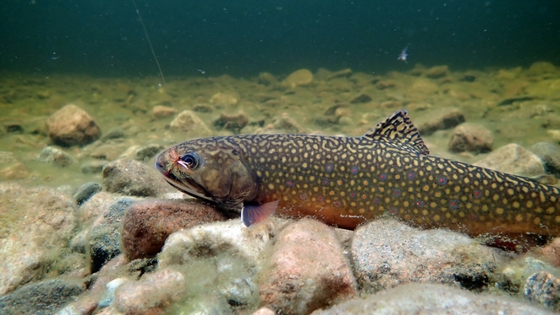Brook Trout Feeding Habits

 The best temperature range when they’re most active and actively feeding is 50°F to 56°F/10°C to 13°C.
The best temperature range when they’re most active and actively feeding is 50°F to 56°F/10°C to 13°C.
Brook Trout inhabit cool, clear water that doesn’t exceed 68°F/20°C.
When water goes above this temperature, they become lethargic, go deep and avoid feeding.
This is common in the summer months in much of their distribution with the exception of northern Ontario and Quebec.
Brook Trout Food Preference
Brook Trout are not fussy eaters.
Like most predatory fish, they’ll eat whatever is available. Common foods include various species of minnows like fathead minnows and golden shiners. They’ll also eat young bass, trout and even their own kind.
Insects also make up an important part of their diet. Any winged insect from mayflies to mosquitoes and they’ll also eat grasshoppers and snails.
Small mammals that are found in the water, including small mice or rats, will be eaten. Frogs also make up their diet (although a very small part of it) and even snakes have been found in their stomachs.
Bait fish and insects make up the bulk of their diet.
Daylight Brook Trout feeding
Brook Trout feed in the early morning and the afternoon prior to sunset. They will also feed through the day. It all depends on how well stock with prey the river is. If they cannot find much in the way of food, they’ll feed until they are no longer hungry or other factors interfere with their feeding.
Human activity will cause Brook Trout to hide and avoid feeding until activity dies down. This is more of a concern in the northern United States and southern Canada.
During Spring afternoon feeding is their most active time as there’s an abundant amount of food.
Night time Brook Trout feeding
Brook Trout don’t have the best eyes for feeding at night. If the water is crystal clear and the moonlight is strong, they will feed at night.
Or, more correctly, they will feed into the evening and less towards sun up. If the water is not clear, night feeding may not happen at all.
Night feeding can be quite active in areas where food is scarce or human activity is abundant during the day. However, an excess of human activity may see very few Brook Trout living in the river.


